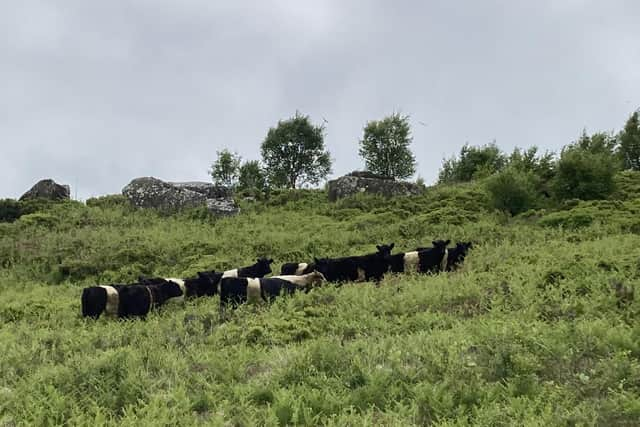Cattle introduced to Brimham Rocks as part of moorland management plan
This article contains affiliate links. We may earn a small commission on items purchased through this article, but that does not affect our editorial judgement.
and live on Freeview channel 276
Grazing will improve the moorland as the cattle will browse the young birch saplings and coarser grasses maintaining a varied structure of heather, improving the habitat for ground nesting birds.
The cattle will help prevent the further growth of large trees which dry out the moorland and will introduce droppings and poach the ground to diversify the habitat for invertebrates and improve the soil quality by increasing bacteria and fungi content.
Advertisement
Hide AdAdvertisement
Hide AdBrimham Rocks is a ‘Site of Special Scientific Interest’ (SSSI).


Attributed by Natural England, this status is used to protect the natural, environmental, or geological heritage of the British Isles from development, pollution, or insensitive land management.
Natural heather moorland habitats are extremely rare - rarer than rainforest.
According to the Moorland Association, 75% of the world's remaining heather moorland is found in Britain and that habitat has been declining rapidly.
Advertisement
Hide AdAdvertisement
Hide AdThe moorland at Brimham has the distinction of being home to three local varieties: ling heather, bell heather and cross-leaved heath.
With its rapid growth and extended root system, if left unattended, bracken will damage the heather moorland beyond repair.
Alec Boyd, Area Ranger at Brimham Rocks said: “We are really excited to be reintroducing cattle to Brimham for conservation grazing.
“It is a very important step to improving the condition of the moor.
Advertisement
Hide AdAdvertisement
Hide Ad“The cattle will help to control the expansion of invasive birch saplings, trample bracken rhizomes and diversify the age structure of heather, allowing us to better preserve this rare habitat.
“We are using cattle instead of sheep or horses because the cattle rips and pulls rather than nibbles at the vegetation.
“This helps create a varied age structure that will benefit other species that call moorland their home.”
A fence has been erected around their roaming area on the south and north moors and to maintain Brimham moorland as open access land, gates have been installed on public rights of way as well as on the most popular desire lines.
To find out more visit: www.nationaltrust.org.uk/visit/yorkshire/brimham-rocks/our-work-at-brimham-rocks